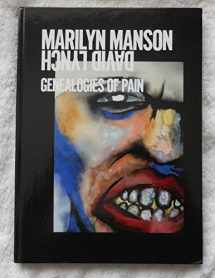
Marilyn Manson & David Lynch: Genealogies of Pain
Book details
Summary
Description
With his brutal post-industrial music, theatrical makeup and controversial lyrics about serial killers and Satanism, shock rocker Marilyn Manson has stood as an icon for a generation of dispossessed teens. It is less well known that Manson has been painting pictures since 1999. Genealogies of Pain presents 30 of his paintings, executed over the past ten years. Manson's portraits of cartoonish characters are rendered in delicate pastel colors, but the subject matter accords with his notoriously morbid aesthetic: one figure gnaws off his own fingers, another wears a gas mask. This volume pairs Manson with filmmaker David Lynch, who has also made a living out of mining mankind's darkest carnal fears. Included here are stills from four of Lynch's early short experimental films, Six Men Getting Sick, The Grandmother, The Amputee and The Alphabet, which employ similar themes of physical and psychological trauma. An interview with Manson explores his techniques and relevant art historical traditions.


We would LOVE it if you could help us and other readers by reviewing the book
Book review



